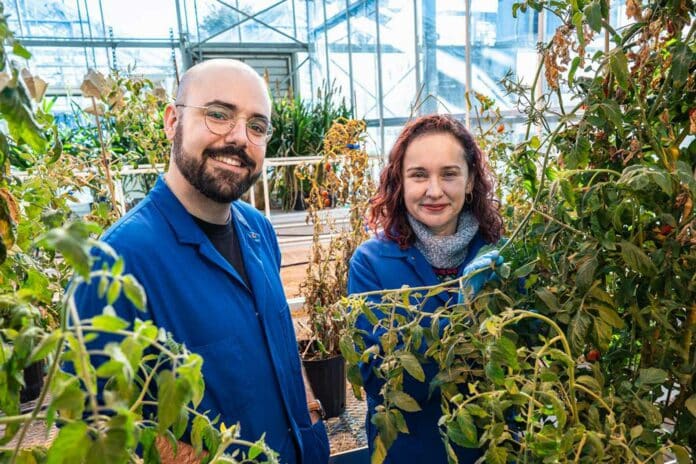Plant roots demonstrate precise spatiotemporal control by integrating environmental signals with development. This is evident in the deposition of suberin, which acts as an apoplastic diffusion barrier, regulating the movement of water, solutes, and gases.
Suberin, typically associated with endodermal differentiation, is unique in tomato plants as it is absent in the endodermis but present in the exodermis—a cell type not found in the model organism Arabidopsis thaliana.
The function of exodermal suberin has been a mystery, but a recent study from the University of California, Davis, reveals that it performs a similar role as endodermal suberin. The study demonstrates that without exodermal suberin, tomato plants struggle to manage water stress effectively. This insight may aid scientists in developing drought-resistant crops.
Siobhan Brady, professor in the UC Davis Department of Plant Biology and Genome Center and senior author on the paper, said, “This adds exodermal suberin to our toolbox of ways to help plants survive for longer and cope with drought. It’s almost like a jigsaw puzzle—if you can figure out which cells have modifications that protect the plant during difficult environmental conditions, you can ask questions like, if you build those defenses up one upon the other, does it make the plant stronger?”
In the study, scientists uncover the role of exodermal suberin and map the genetic pathways that regulate its production.
In the research process, scientists initially identified all actively used genes in root exodermal cells. Subsequently, through gene editing, they created mutant strains of tomato plants with non-functional versions of suspected suberin production-related genes. Seven essential genes for suberin deposition were identified.
To assess the role of exodermal suberin in drought tolerance, the scientists exposed some mutant tomato plants to a ten-day drought. Specifically, they concentrated on two genes: SIASFT, an enzyme crucial for suberin production, and SlMYB92, a transcription factor that regulates the expression of other genes involved in suberin production.
The experiments provided confirmation that both genes, SIASFT and SlMYB92, are crucial for suberin production. In the absence of these genes, tomato plants exhibited a reduced ability to withstand water stress. While the mutant plants thrived similarly to normal plants under well-watered conditions, they demonstrated significantly more wilting after ten days without water.
Brady said, “In both of those cases where you have mutations in those genes, the plants are more stressed, and they’re not able to respond to drought conditions.”
“Having shown suberin’s worth in a greenhouse setting, we are planning to test suberin’s drought-proofing potential in the field.”
“We’ve been working on taking this finding and putting it into the field to try and make tomatoes more drought tolerant.”
Journal Reference:
- Cantó-Pastor, A., Kajala, K., Shaar-Moshe, L. et al. A suberized exodermis is required for tomato drought tolerance. Nat. Plants (2024). DOI: 10.1038/s41477-023-01567-x
